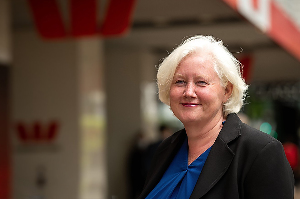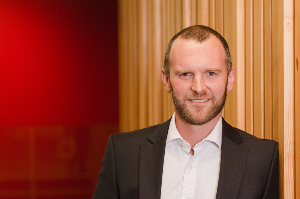A rebound in values is underway in Auckland, with REINZ data showing December sales were the highest in four years – particularly in the Papakura District – which were up by 65% on the year before. After a period of stagnation for several years, prices are on the up too, with a 4% rise in values over the past year.
In South Auckland, this is being evidenced at the coalface, with market participators noting the lift in numbers of investors in the market and increased demand from first home buyers.
Trader and investor Nathan Mudafar says in the two weeks prior to Christmas there is typically an empty auction room, yet in the days before Christmas last year, auction rooms were packed in South Auckland.
“I think that’s probably a good indication of what’s been happening,” says Mudafar. “We’ve come back this year and it’s already going strong again – every time I go to an auction now, every property has a couple of bidders.”
Yet while it’s not quite a return to the heights of the 2015/2016 market, the increased activity means finding a suitable deal to trade is a challenge, says Mudafar.
“The money’s in the buy, all investors know that ... In this market, you’re not going to be able to buy extremely cheap. What you’re relying on is buying for a reasonable price, and then there’s a bit of risk involved. I think that now it’s more of a seller’s market – you have control over the price at the end.”
Mudafar and partner Brenda Ni recently purchased a three-bedroom trade on a cross-lease section in Manurewa for $490,000 and spent several months renovating the interior at a cost of $30,000. It’s now under contract for $595,000 and after costs they will make around $25,000 profit – just over their minimum acceptable profit of $20,000.
Rents on the rise
Investor Chris Moore, who has 18 rentals in South Auckland, is also looking at trades with a $20,000-plus return, but agrees that good deals are getting hard to find due to price increases. He says rents are beginning to follow suit, too.
“We’re seeing at the moment the rents are going crazy as well. It’s going to happen with the prices going up. We always do a $10 or $15 increase every six months, but we’ve got properties that have been rented for two or three years and the tenants are moving on, and just by doing a tidy up, new carpet, curtains and paint, some of the rents are actually going up $90 or $100 more than what we were getting before the tenants left.”
The latest Trade Me data shows Auckland rents have risen 4% over the past year and Quinovic Greenlane’s Tony Smith says he sees this reflected in the South Auckland market.
“Rents are still strong and increasing up to 5% per year. And there’s still very high demand for accommodation.”
Smith says both investors and first home buyers are interested in the growing South Auckland apartment market, as well as “build-to-rent” projects, such as New Ground in Tamaki.
Location, location
Investors need to know their market and what their tenant wants, Smith cautions.
“In South Auckland they tend to be cheaper properties – bigger houses, bigger families, and people are community focused. So if the transport is good and you’re near hubs like Botany, Manukau and Papatoetoe where you’ve got lots of shops, that’s what people focus on.”
Mudafar says when trading, it’s just as crucial to know your market.
“In our case, we are targeting primarily first home buyers, and South Auckland is where first home buyers are buying. The average three-bedroom property in Manurewa is bought by a first home buyer.
“We tend to focus on Mangere, Papatoetoe, Mangere East, Manurewa and Papakura. Those are good suburbs. Unless you’re an experienced investor I would avoid places like Clendon Park and Redhill.”
Mudafar says these areas can be “rough” and as a trader it’s unpredictable what you will get for an end value.
Taking advantage of the Unitary Plan
iFindProperty property investment specialist Kunal Mehta says while there’s a shortage of multi-income properties on the market in South Auckland currently, investors can take advantage of provisions for minor dwellings in single dwelling zones within the Unitary Plan guidelines.
Mehta says that while an existing home and income has a high price point – “you’re looking at $850,000 to $900,000 in South Auckland and you can expect $1,100 to $1,200 rent out of that” – investors with less cash are creating a second income stream through adding a minor dwelling.
“With the Unitary Plan, having a minor dwelling is a lot simpler and in most cases you don’t need a resource consent, depending on the zoning that your property is in. I’ve seen a lot of new minor dwellings popping up and it’s a great way to boost your rental returns and yield.
“Essentially by just putting in a new two-bedroom dwelling (which can’t be more than 65m²), you’ll get around $400 to $450 return on an investment of $200,000 to $250,000.”
Mehta says because there’s no premium attached to buying in the single dwelling zone, investors aren’t competing in the developer space and can bag a bargain.
Year ahead
Mehta says as prices climb, investors need to be aware of yields, but that yields in South Auckland match any other location in the region.
“I would say, that in Papakura and Manurewa the yields are still there. You can still achieve a 4.5-5% yield in those areas.”
Moore says the rents are already going up more than he expected and rental demand is increasing too, and that in the ten years he’s held property in South Auckland he’s experienced minimal vacancies.
“I don’t think we’ve had a vacancy for more than a week, unless we’ve been renovating the property. When a tenant gives notice, the manager advertises the property and when the tenant leaves we have a new one go in within a day or two. It’s just a great place to have rental property.”
Moore predicts rents and prices will rise steadily over the next four to five years.
Mudafar agrees South Auckland is on the up, and he’s looking at securing more buy-and-holds there this year.
“We think the market is going to do quite well. If it was me I would say to my friends and family, don’t overleverage yourself, be a smart investor still, but don’t wait around …”



